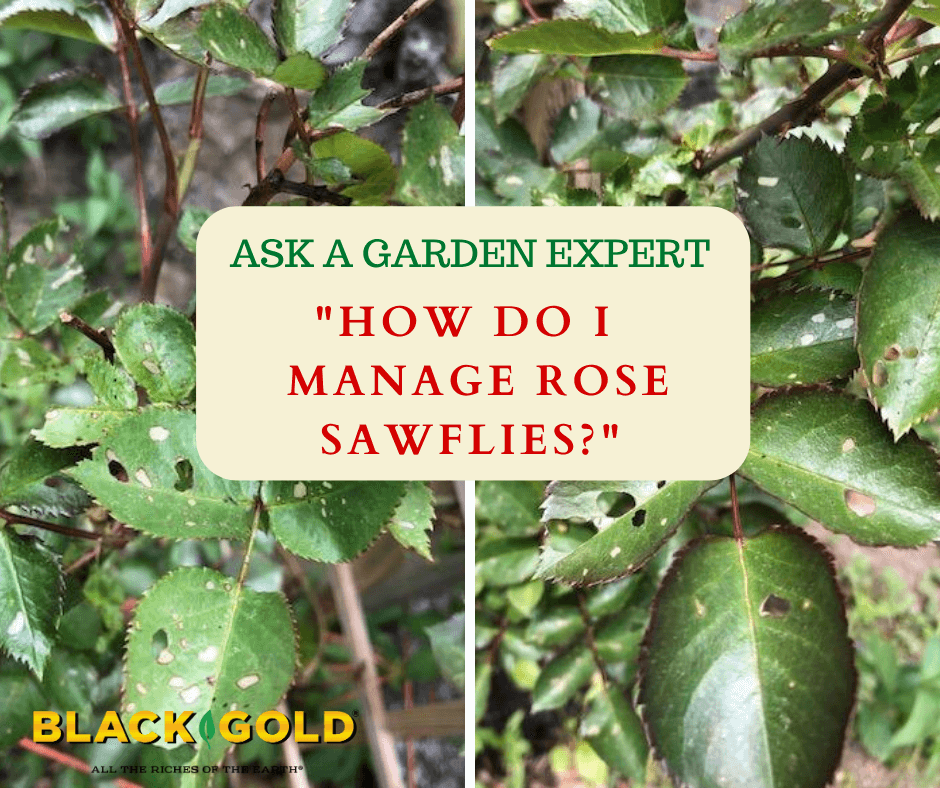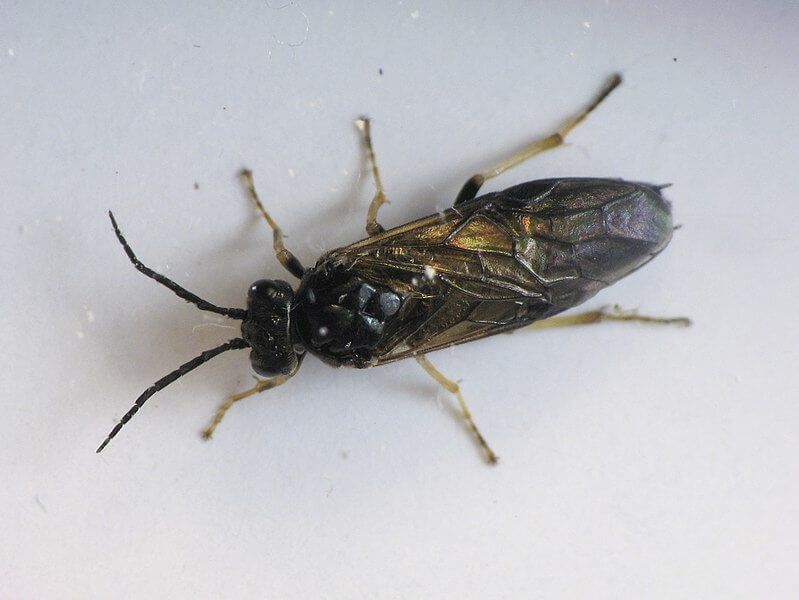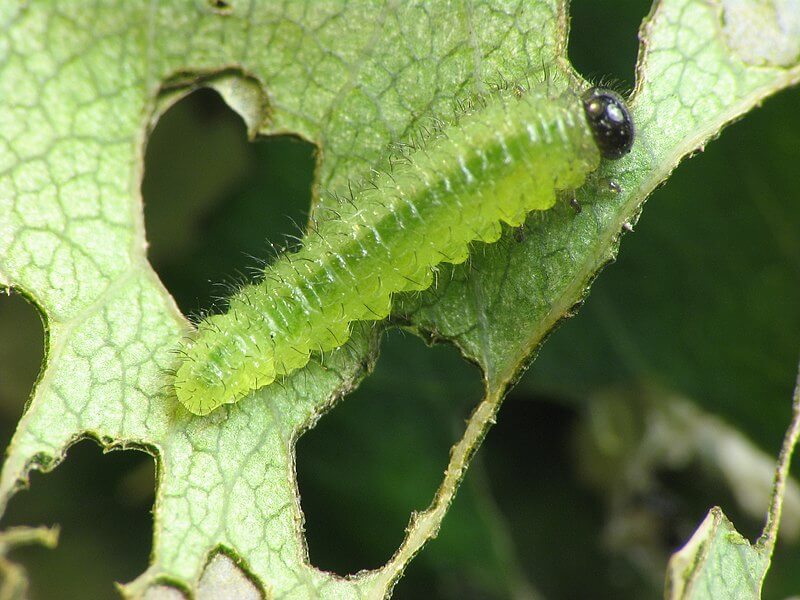
“My roses have lots of hollow and brown holes in their leaves. What is causing the damage, and how do I stop it?” Question from Pam of Massachusetts
Answer: It’s so lovely when questions come with images–especially when photos make for easy identification. Your roses are suffering from the larvae of rose sawflies, also called rose slugs, though they are not true slugs at all. The sawfly larvae eat along the leaf surfaces from the back–leaving brownish spots and blotches of dead tissue that eventually falls away, leaving open holes. If there are only a few of the pests present, the damage will be minor, but at high populations, they can defoliate plants, making rose bushes look unsightly and weakening them. There are several methods for managing rose sawflies.
How to Manage Rose Sawflies


Rose sawflies are black, winged insects that emerge in early spring. After mating, they lay elongated clusters of eggs within cuts they create along rose stems. Within a couple of weeks, gardeners will begin to see the damage caused by the small, green, caterpillar-like larvae that have emerged. Once they are large enough, the larvae will drop down to the ground and pupate in the soil. There are several types. One of the most aggressive is the bristly rose sawfly (Cladius difformis), which can produce lots of generations in a season.
It’s best to catch these pests early on, so you can stop them in their tracks before they do a lot of damage. If you have experienced them in the past, it helps to look for egg masses in mid-spring and remove them. Look on the backs of leaves as soon as you begin to see telltale damage. The larvae can be easily smashed on sight or treated with OMRI Listed BT, Neem oil, or insecticidal soap. Remove and kill all the larvae you can find, and be sure to keep any sprays away from the flowers to keep pollinators from being harmed.
Once you have rose sawflies, keep a lookout for more and manage them as you see them. If you remain diligent, you will be able to stop them or keep populations down.
I hope this helps.
Happy rose growing!
Jessie Keith
Black Gold Horticulturist

